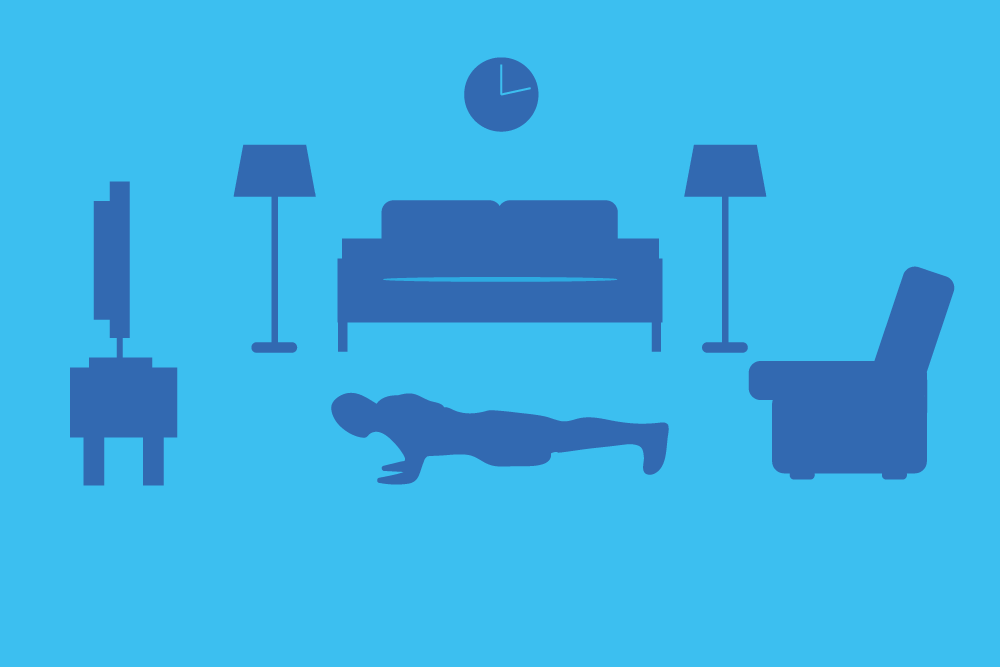Can bodyweight exercises build muscle?

Yes, bodyweight exercises can build muscle if you use the following principles: increase reps, decrease rest times, perform variations, train to failure, increase time under tension, and implement mechanical drop sets.
Muscle Building 101

Let’s quickly cover what it takes to build muscle. Building muscle primarily comes down to 3 factors:
1. Mechanical Tension
This is primarily what happens when you lift heavy things. If you’ve ever tried lifting a heavy barbell off the ground that weighs more than you do, this is mechanical tension at work. You’re working your hardest to keep your shoulders packed, spine neutral, and core tight. When muscles are exposed to lots of mechanical tension, they respond by growing.
2. Metabolic Stress
This is the burning sensation that you get when muscles are fatigued. It’s also known as the “pump” in the bodybuilding world, as muscles engorge with blood which can make them look swollen and vascular.
3. Muscle Damage
This is the muscular soreness that you feel 24-48 hours after a workout. While you don’t need to feel soreness to build muscle, it is generally a good sign that local muscles are being repaired and getting stronger.
There’s more that goes into the science of muscle growth, but we’re going to leave it at the basics. As long as you have significant mechanical tension and metabolic stress (muscle damage plays a smaller role), you will build muscle.
In real world terms, you can fulfill these requirements through a variety of different training methods.
Of course, traditional weight lifting is an effective means of building muscle. Resistance bands can also build muscle. Even just tensing muscles in what’s called isometric contractions can build muscle.
The big question for this article is whether the resistance of your bodyweight is enough to stimulate muscle growth?
Try one or all six of these tactics in your next workout and see what tests your muscles the most:

1 . Increase reps and sets; decrease rest time. The more you do an exercise, the more you’ll increase the metabolic stress you put on your muscles. Do more reps and sets of bodyweight exercises than you’d typically do at the gym with weights for similar results. You also want to limit breaks between those reps and sets, too, without sacrificing proper form. This puts more stress on the muscle, promoting growth. In fact, research shows that low-load resistance training (with a light weight or bodyweight) combined with little rest may enhance metabolic stress and increase muscle size even more than lifting heavy weights and taking longer breaks. If you typically lift weights for about eight reps in the gym, try doing that same move for 20 reps at home with just your body.
2. Change the angle or tempo of the exercise. To increase microtrauma, try taking your lunges for a walk or stepping out on a diagonal. Or add an incline or decline to your push-ups, suggests Galbraith. Changing the angle can both incorporate other muscles into the move, but also work different parts of the same muscle group. It’s also a good idea to slow down the eccentric or downward phase of an exercise (like when you lower to the bottom of a deadlift) and then explode up (quickly moving up from a deadlift or hinged position). Another option: Slow down the entire exercise. For example, lower into a squat on a count of three, holding at the bottom for three, then stand up on another count of three. This increases the time your muscle is under tension, meaning you’re more likely to create microtraumas within your slow-twitch muscle fibers, which have more endurance capacity than fast-twitch fibers.
3. Add some holds and half-reps. This can add more metabolic stress to the muscles, thus resulting in more gains. For example, if lunges feel easy, hold the bottom of the movement (both knees bent 90 degrees) for a few seconds before standing up. Or, step back into your lunge, lift halfway up, then drop back down before you come back up to standing. Also, try stopping short of standing all the way up from a squat or lunge, or stop short of lowering all the way down in a glute bridge. This works because you’re putting the muscle under tension for a longer period of time, or eliminating any points in the movement where the working muscle gets a break.
4. Do more plyometrics.  To increase the tension on your muscles, add some explosiveness to your moves. Squat jumps, lunge jumps, hinge jumps, burpees—they all count toward more muscle building. When a muscle is stretched, it leads to nerve firing that signals a concentric contraction (shortening of the muscle). A quicker stretch (like what happens during the explosive portion of a plyometric exercise) leads to a stronger nerve firing and greater resulting contraction of the muscle. That stronger contraction means your muscle is working harder, and will likely result in more microtrauma and thus more gains. One study on young soccer players found that those who performed plyometric moves had similar muscle gains to those who did resistance training.
To increase the tension on your muscles, add some explosiveness to your moves. Squat jumps, lunge jumps, hinge jumps, burpees—they all count toward more muscle building. When a muscle is stretched, it leads to nerve firing that signals a concentric contraction (shortening of the muscle). A quicker stretch (like what happens during the explosive portion of a plyometric exercise) leads to a stronger nerve firing and greater resulting contraction of the muscle. That stronger contraction means your muscle is working harder, and will likely result in more microtrauma and thus more gains. One study on young soccer players found that those who performed plyometric moves had similar muscle gains to those who did resistance training.
5. Perform single-sided exercises. Switch your typical bilateral (or two-sided) exercises to unilateral (or one-sided) movements. That means turning a squat to a pistol squat, making your glute bridge a single-leg bridge, or turning your plank into a single arm (and/or leg) plank. These simple switches can increase the microtrauma to a muscle, as well as add more tension or load to that muscle, says Galbraith. Think about it: One side is handling all the weight rather than splitting it.
6. Focus on the eccentric (or lowering) part of the exercise. For example, the eccentric part of a push-up is when you lower yourself from the top of the push-up to the ground. For a squat, the downward motion as you sit down is the eccentric movement. Training the eccentric will lead to more muscle damage.
For a customized HOME WORKOUT PROGRAM, Do Join our Online Coaching Program where we cater to your dedicated Goal by allocating a custom home baed program : https://strong.lk/online-coaching/
IN TERMS OF NUTRITION CONSIDER THE FOLLOWING :
CALORIE SURPLUS
Not everything you do to build muscle happens in the gym.
In fact, a lot of the hard work comes in the kitchen. To adequately build muscle, you need to be eating in a caloric surplus. This means that you need to be eating more calories than what your body burns on a daily basis and it is these added calories that will give you the extra energy your body needs to build muscle. You might know this as bulking.
For example, let’s just say your maintenance calories is 2000 calories per day. That’s how much you have to eat so that your weight remains the same—you won’t gain weight and you won’t lose any either. To put you in a caloric surplus to build muscle, while minimizing as much fat gain as possible, try adding an extra 200-500 calories. This will make your daily calorie goal around 2200-2500 per day.
This is just an example caloric surplus as it’s a number that definitely varies depending on the individual. Some people might find that they are rapidly gaining too much fat eating at this caloric surplus, so they may need to lower the number of excessive calories they’re eating. If you find that you want to eat at a larger surplus or a smaller one, then simply adjust your calories to suit your needs.
EAT ENOUGH PROTEIN

The building blocks for muscles is protein. This is why it’s pivotal to ensure that you’re eating enough protein in your diet to encourage that muscle growth. Combined with your strength training, whether that’s in the gym or using bodyweight exercises, you can stimulate muscle growth and see the gains you want to see.
Never Stop Progressing
As with any type of exercise, there’s always a risk of hitting a plateau if you keep doing it over and over again without playing around with any variables or continuing to test your muscles in new ways. That’s why it’s important to progress your program, adding variations to the exercises and increasing the challenge on moves with the methods Galbraith mentions above—that’s how muscle building continues to happen.







